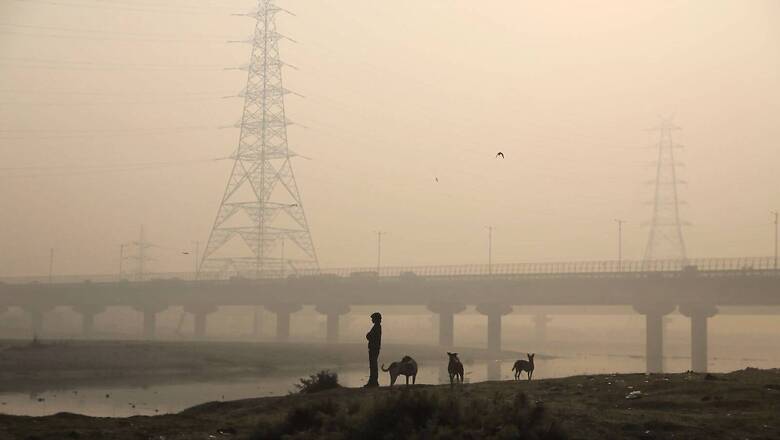
views
Delhi’s air quality has improved over the years as PM10 levels in the city dropped by over 30 per cent between 2014 and 2021 but it is still nearly four times above the prescribed standard, government data analysed by CNN-News18 shows.
As per the Economic Survey of Delhi, the annual city average of PM10 decreased from 324 µg/m3 in 2014 to 221 µg/m3 in 2021. “Annual city average at all the monitoring locations exceeds the prescribed standard – 60 µg/m3,” the report said.
Particulate Matter (PM) is an indicator of ambient pollution. It is basically a mixture of extremely small particles and liquid droplets like acids, chemicals, gas, water, metals, soil dust particles, etc. It is also known as particle pollution. PMs with size equal to or less than 10 micron are called PM10 and those having an aerodynamic diameter less than or equal to 2.5 µm are known as PM2.5.
The past reports analysed also show that PM2.5 levels have dropped by about 25 per cent during the said period — from 149 µg/m3 in 2014 to 113 µg/m3 in 2021. However, the annual city average at all the monitoring locations exceeded the prescribed standard of 40 µg/m3, the numbers show.
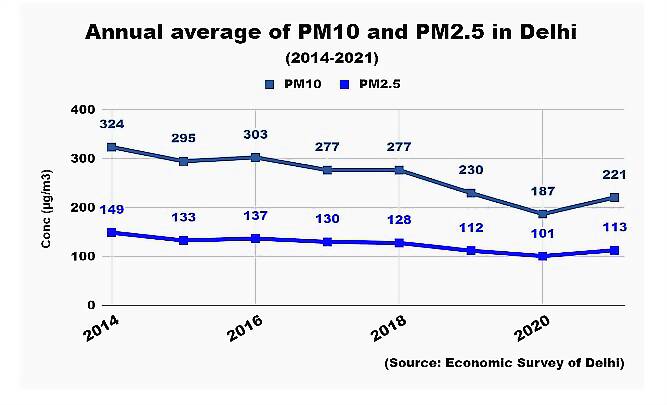

Delhi is a landlocked city with limited resources. Rapid urbanisation along with growth in economic activities in its surrounding areas is responsible for the Capital’s environmental problems.
“Air pollution, water pollution, loss of biodiversity, noise pollution etc. are the major environmental challenges… Increase in the number of vehicles in Delhi is far faster than construction of roads. Besides large-scale construction activity, the problem of air pollution gets aggravated due to crop residue (parali) burning in NCR and neighbouring states in the winter months which does not favour dispersion of air pollutants,” the Economic Survey reads.
It also added that Delhi’s environment is highly influenced by different meteorological phenomena. In summer, the particulate is influenced by dust storms from Rajasthan and in winter, by calm conditions and inversion as well as biomass burning in NCR.
The data from the Central Pollution Control Board (CPCB) shows that 2019, 2020 and 2021 had almost equal days or more ‘good’ to moderate’ air quality days when compared ‘poor’ to ‘severe’ days. During the previous three years — 2016 to 2018 — Delhi witnessed more poor to severe days than good to moderate. An AQI between 0-50 is considered good, 51-100 satisfactory, 101-200 moderate, 201-300 poor, 301-400 very poor and 401-500 severe.
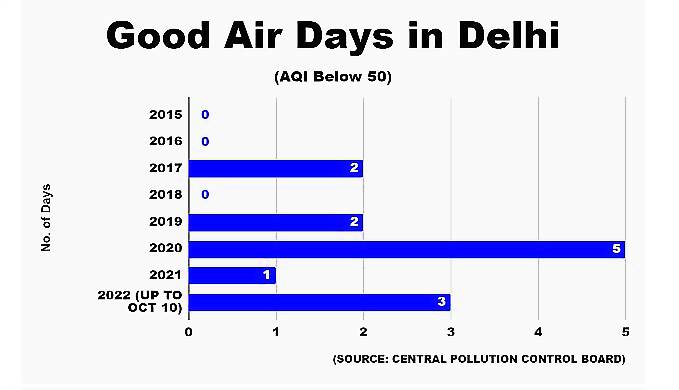
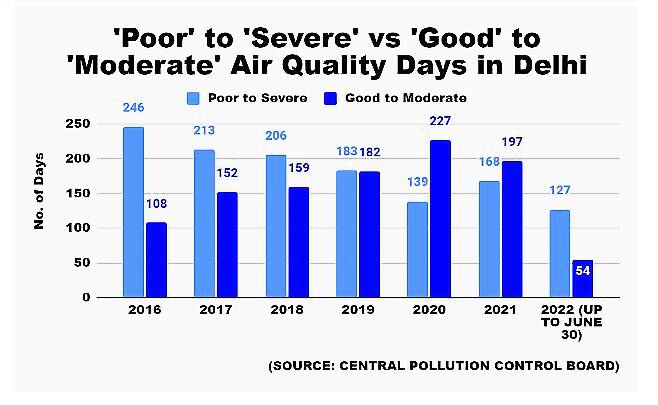
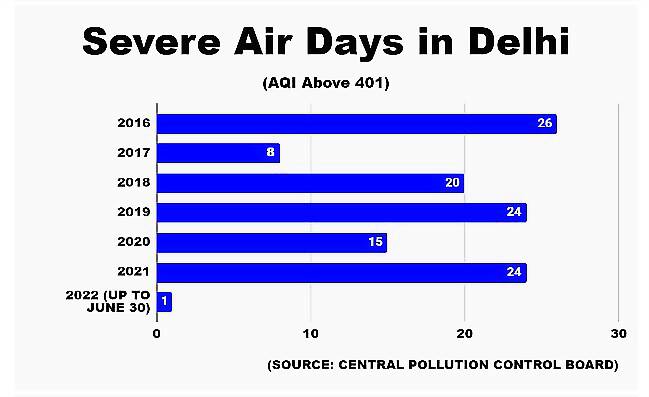
This year was further better as the winter season started from a much-cleaner benchmark due to rains in September and October. According to a report from the Centre for Science and Environment (CSE) released earlier this month, the recent winters show about 20 per cent improvement in seasonal air quality compared to winters of 2015-18, but progress seems to have stagnated since the pandemic.
“Delhi’s seasonal air quality for winter (1 Oct to 28 Feb) used to hover around 180-190 µg/m3 before the pandemic and for the last three winters, it has come down to 150-160 µg/m3,” it said.
It also said that the intensity of the early winter pollution will depend a lot on the trend in the crop fires and also the impact of Diwali. However, official numbers suggested that the pollution levels around Diwali this year were much better when compared to the past. This year, the AQI a day after Diwali was 303 — lowest since 2015 — according to the CBCP data.
The CSE report also suggested that the total smog days in Delhi has also dropped from 24 in 2016-17 to 20 in 2021-22.

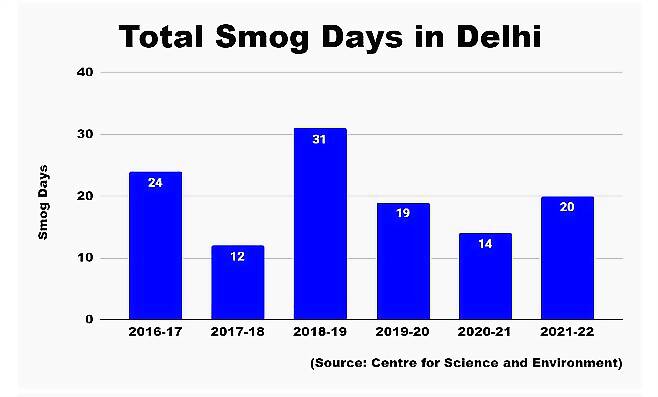
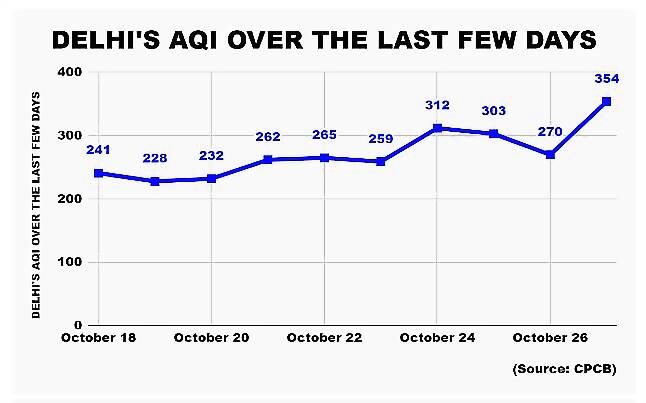
According to the World Health Organization, from smog hanging over cities to smoke inside the home, air pollution poses a major threat to health and climate. Ambient air pollution in both cities and rural areas is causing fine particulate matter, which results in strokes, heart diseases, lung cancer, acute and chronic respiratory diseases.
Read all the Latest India News here













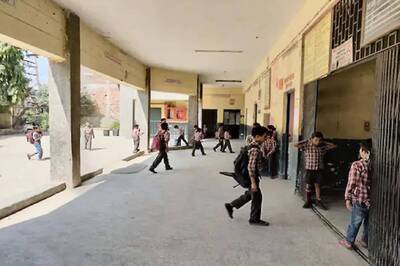






Comments
0 comment